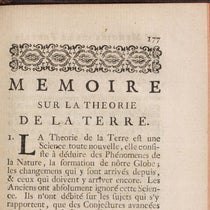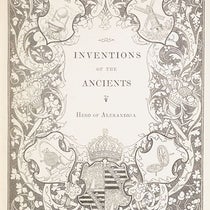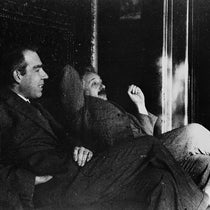Scientist of the Day - Poul La Cour
Poul La Cour, a Danish scientist, teacher, and inventor, died on Apr. 24, 1908, at the age of 62. He was born on Apr. 13, 1846, in east Jutland, and studied meteorology in college. He worked at the Meteorological Institute (which he helped found) until 1878, when he took a job teaching science at the recently established Askov College in south Jutland.
La Cour is best known for inventing the wind turbine for generating electricity through wind power, and he built several of these in Askov, including the one shown on the postcard (third image), with La Cour himself in the foreground. Excess electricity was sent to the basement, where it was used to break down water into hydrogen and oxygen, which was then piped to the college not far away for use as fuel.
But today we feature one of La Cour's earliest inventions, made while he was working as a meteorologist. He became interested in telegraphy, because instant communication is everything to a meteorologist, and found that the big obstacle to efficient telegraphy was finding a way to send multiple messages over one wire. Thomas Edison and Elisha Gray were working on the problem, but young Poul jumped right in and invented the "phonic wheel", which used multiple tuning forks to provide carrier waves, as it were, for different messages, which could be separated at the receiving end by tuning forks of the same frequency. His phonic wheel, said La Cour, could send up to 100 messages simultaneously on a single wire. He announced his Roue phonique in a book with that title in 1878, a book that Jason Dean acquired for the library just last year. The wood engraving of his invention was used three times, on the front cover (fourth image), the title page, and in the text (first image). There are quite a few text wood engravings; we show one that depicts a tuning-fork transmitter (fifth image). The book was published in both Danish and French; we have the French edition.
La Cour's invention had some use in Denmark, but he did not crack the U.S. market, as Gray came up with a similar device and got his U.S. patent first. La Cour is not well known in this country, but he is a celebrated figure in Denmark, at least in wind turbine circles. They took down his Askov wind turbine in 1968, and the building that supported it was turned into the Poul La Cour Museet (museum) in the early 2000s (sixth image). I was unable to determine if they have one of his original phonic wheels on display. But you can go down into the basement and see the vats of water where electricity was used to make hydrogen. There are photos on the museum website.
I don't know what brought on the early death of La Cour, but he was buried at Skibelund Krat, a "national meeting place" in Askov Parish, and a handsome engraved stone marks his resting place (last image). The inscription reads, "As heaven's light illuminates our eye, so our thought is kindled by the light above" (my thanks to Jole Shackelford for this rendering, which came in several lengths ahead of Google Translate).
William B. Ashworth, Jr., Consultant for the History of Science, Linda Hall Library and Associate Professor emeritus, Department of History, University of Missouri-Kansas City. Comments or corrections are welcome; please direct to ashworthw@umkc.edu.













